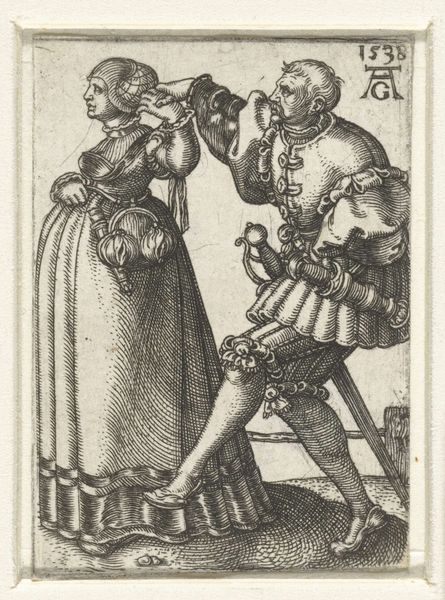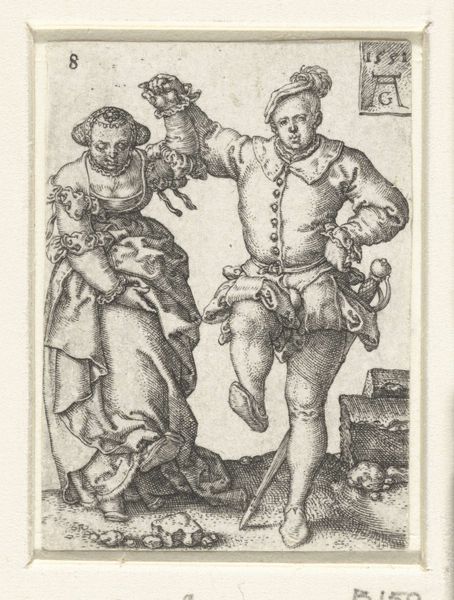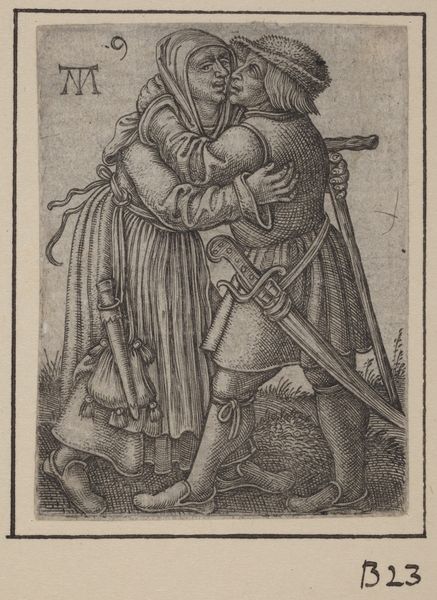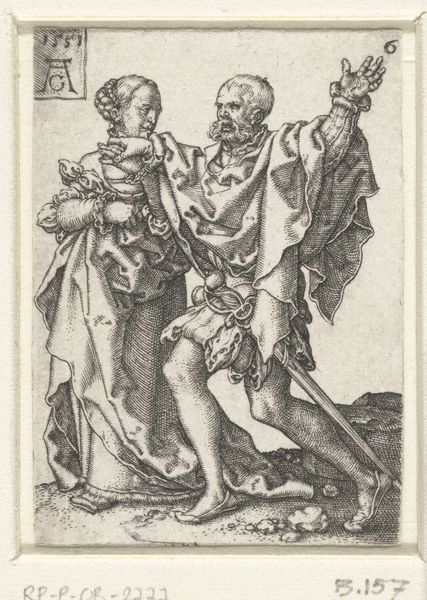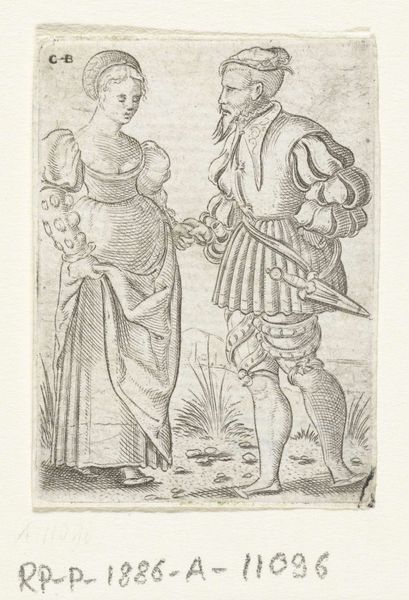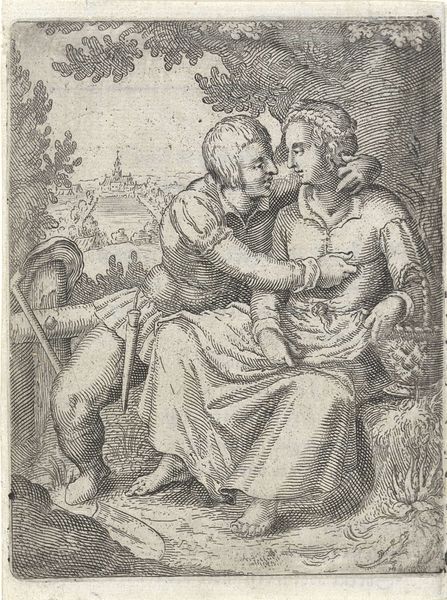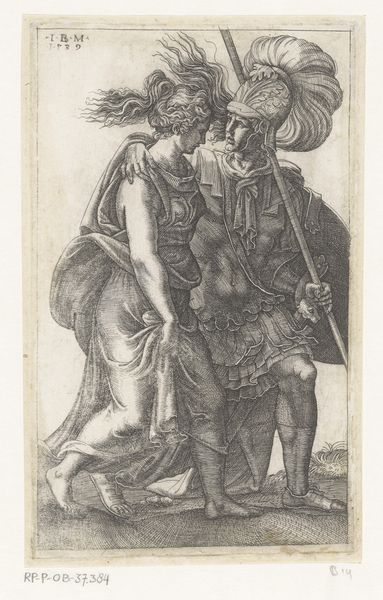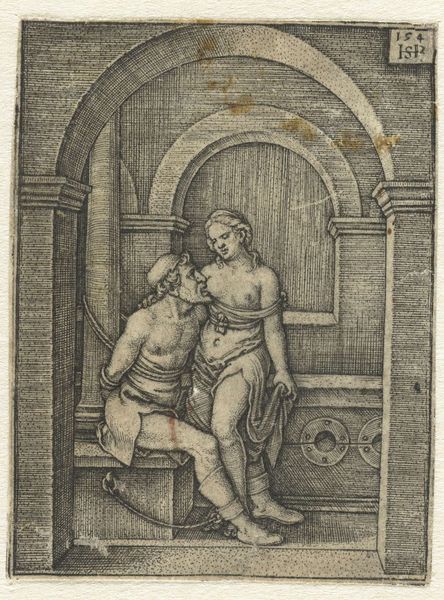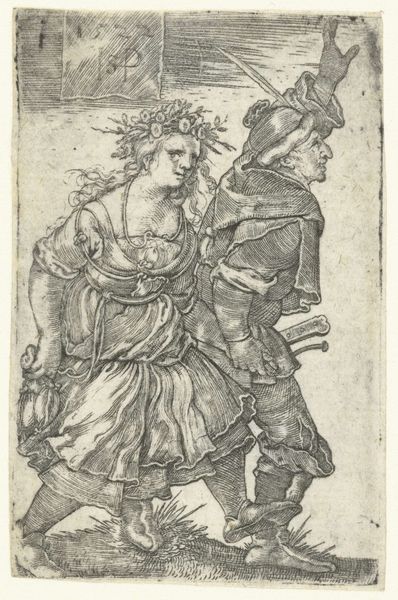
print, intaglio, engraving
# print
#
intaglio
#
old engraving style
#
figuration
#
form
#
line
#
genre-painting
#
northern-renaissance
#
engraving
Dimensions: height 53 mm, width 36 mm
Copyright: Rijks Museum: Open Domain
Curator: Heinrich Aldegrever's "Omhelzend paar," or "Embracing Couple," from 1538 is quite striking. Made with engraving, this little print really captures a moment. What do you think of it right away? Editor: It has a somberness that contradicts its ostensible subject. There is a gravity to the figures despite their embrace; I wonder if this is an allusion to a kind of class consciousness? The sword the man is carrying speaks to an identity deeply entrenched in notions of chivalry and masculine duty. Curator: You know, the sword is something I've always found fascinating! The details Aldegrever captures with those intricate lines suggest a weighty narrative—it adds this subtle drama, like this isn't just any embrace, it’s an embrace fraught with circumstance, maybe risk. It's curious, like a secret loaded with meaning. Editor: Precisely! And what does the context tell us? Aldegrever positioned himself during the Reformation. His patrons were largely merchants and members of the middle class in Northern Germany. Therefore, the 'genre-painting' here, in which social strata and burgeoning mercantile values began to take form, marks a critical intersection for interrogating nascent capitalism and humanist expression. Curator: I hadn’t thought of it that way, I saw it as a genre scene for a burgher audience with no deep meaning… But considering the period, it does make one consider if there were veiled political meanings? This interplay of love and arms. The couple's intense focus… There's an unsettling ambiguity that could invite any number of social interpretations, or personal stories, and you may be onto something! It becomes almost cinematic in its mystery! Editor: Absolutely! Art does not exist in a vacuum, particularly at a turning point like the Northern Renaissance. Each line serves to position or disrupt the societal status quo, engaging us to examine how we create new perspectives from traditions that we have always understood. Curator: It really highlights how much our interpretation is framed by our understanding of history. Now, I see Aldegrever’s decision to render them with such detailed materiality as far more than merely descriptive. I now want to walk around it! Thank you for helping me see past my initial notions. Editor: That is the beauty of engaging with art and opening dialogues. It permits art historical context to inform and question our initial understanding to invite ever-greater depths of interpretation and engagement.
Comments
No comments
Be the first to comment and join the conversation on the ultimate creative platform.
